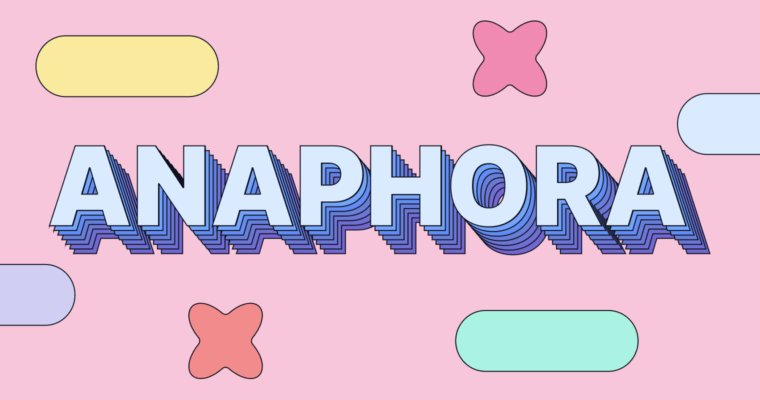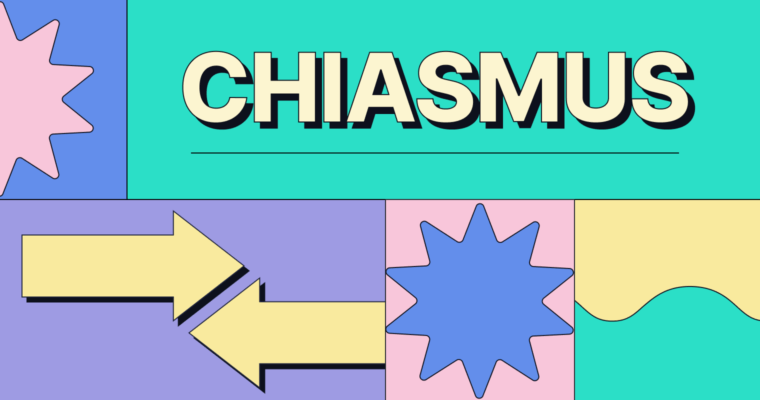
Anaphora creates a lot of things. Anaphora creates rhythm. Anaphora creates emphasis. Anaphora creates emotion. Anaphora creates lyricism in your writing that can inspire readers and make your words unforgettable.
What is anaphora?
Anaphora (pronounced uh-naf-er-uh) is the repetition of a word or phrase in successive clauses, sentences, or phrases. Its purpose is to emphasize the repeated words, often with the goal of creating rhythm and structure. Here is a quick example of anaphora:
After taking Literary Criticism, I found myself analyzing everything I read. I analyzed video game dialogue. I analyzed magazine articles. I analyzed the fluffy genre fiction I read on the beach. I even analyzed recipes.
By repeating “I analyzed” four times, the author emphasizes just how frequently they found themselves analyzing text that typically doesn’t get much analysis. Notice how in the last sentence, the phrase “I analyzed” becomes “I even analyzed.” Anaphora can (and often does) contain small variations like this.
Anaphora is similar to epistrophe, the repetition of a word or phrase at the end of successive clauses or sentences. Both are popular literary devices for songwriters, poets, and speechwriters because they’re an easy and effective way to create emotion by drawing attention to the repeated words. Other literary devices that primarily create sounds, rather than illustrate text in the reader’s mind, include alliteration, assonance, consonance, and onomatopoeia.
How do you use anaphora?
Anaphora has two rules:
1 The repeated word or words need to appear at the beginning of two or more phrases, clauses, or sentences.
2 The repeated word or words need to feel deliberate and create a sense of meaning.
That second rule is a bit more subjective. Not all instances of successive sentences with the same opening word or phrase are examples of anaphora. Here’s an example of a repeated word in multiple sentences that isn’t anaphora:
Meena enjoys writing. Meena usually writes poetry, but sometimes she writes plays and short stories. Meena has been writing since she was eight years old.
Although the name “Meena” is repeated three times, this isn’t an example of anaphora because the repetition isn’t used to create rhythm or emphasis. Instead, we have a somewhat awkward paragraph that could be improved by substituting the pronoun she for Meena in the second and third sentences.
Variations in anaphora
As we mentioned above, anaphora can contain variations. Take a look at this example from William Blake’s poem “London”:
In every cry of every man, In every Infant’s cry of fear, In every voice, in every ban, The mind-forg’d manacles I hear.
In some cases, working a variation into your anaphora can make it stronger.
How to use anaphora
To use anaphora in your writing, first determine what you want to emphasize in the text. Then brainstorm the most effective word choice for the concept, idea, or name you want to emphasize. It could be a single word, a short phrase, or even a full clause. Try speaking it out loud and listening to how the sounds in your words fit together. Do they flow? Do they clash? Clashing isn’t always a bad thing—when your goal is to create a mood of discomfort or discord, harsh-sounding anaphora can give you exactly what you’re looking for. Here’s an example:
When I had a cold, I blew my nose more than I ever thought possible. I blew my nose when I woke up. I blew my nose when I ate. I blew my nose when I watched TV. And I blew my nose all through the night.
Then put the anaphora to work. See how it fits into the rest of the piece you’re writing. If you’re not getting the effect you had in mind, try swapping out the words or even playing around with another rhythmic device like alliteration.
Anaphora examples
Writers use anaphora for a variety of reasons. Perhaps the most common reason is the rhythm it creates in their writing. This is why anaphora is most common in poetry, song lyrics, and speeches. When you hear anaphora spoken or sung aloud, it’s easy to hear the lyrical quality it creates. Read aloud this excerpt from Dr. Martin Luther King Jr.’s “I Have a Dream” to hear how he used anaphora to give his speech rhythm and texture:
And if America is to be a great nation, this must become true. And so let freedom ring from the prodigious hilltops of New Hampshire. Let freedom ring from the mighty mountains of New York. Let freedom ring from the heightening Alleghenies of Pennsylvania. Let freedom ring from the snowcapped Rockies of Colorado. Let freedom ring from the curvaceous slopes of California. But not only that, let freedom ring from Stone Mountain of Georgia. Let freedom ring from Lookout Mountain of Tennessee. Let freedom ring from every hill and molehill of Mississippi. From every mountainside, let freedom ring.
In “I Have a Dream,” anaphora does more than create rhythm. It also emphasizes King’s message through the sentences’ uniform structure. This emphasis and structure—and the emotional responses they can evoke in readers and listeners—make anaphora a valuable tool in rhetoric. Specifically, it’s a valuable tool for creating pathos in rhetoric, which builds empathy between the speaker and their listener.
You may shoot me with your words, You may cut me with your eyes, You may kill me with your hatefulness, But still, like air, I’ll rise. —“Still I Rise,” by Maya Angelou
You thought that I’d be weak without you, but I’m stronger You thought that I’d be broke without you, but I’m richer You thought that I’d be sad without you, I laugh harder —“Survivor,” by Destiny’s Child
It rained on his lousy tombstone, and it rained on the grass on his stomach. It rained all over the place. —The Catcher in the Rye, by J. D. Salinger
Anaphora FAQs
What is anaphora?
Anaphora is the repetition of a word, phrase, or clause at the beginning of two or more successive sentences.
How does anaphora work?
Anaphora works by creating rhythm within text. By creating rhythm, it evokes emotion, gives the text structure, and emphasizes the repeated word or group of words.
How is anaphora different from repetition?
Anaphora is a type of repetition. Specifically, it’s the repetition of a word or group of words, sometimes with variations, at the beginning of successive sentences.






